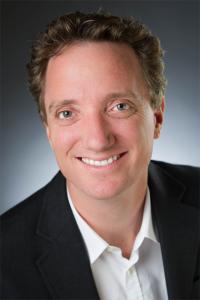Mark Churchland, PhD
- Associate Professor of Neuroscience (in the Mortimer B Zuckerman Mind Behavior Institute)

Overview
Academic Appointments
- Associate Professor of Neuroscience (in the Mortimer B Zuckerman Mind Behavior Institute)
Gender
- Male
Credentials & Experience
Committees, Societies, Councils
Co-director, Grossman Center for the Statistics of Mind
Member, Kavli Institute for Brain Science
Member, Behavior Research
Honors & Awards
Research
The brain is not only a remarkable computational organ – capable of feats that stymie the best computers and robots – it is the seat of who we are and all we think. Yet despite such romantic notions, modern systems neuroscience has principally asked how the brain transforms inputs into outputs. This approach has deep historical roots – Descartes, Sherrington – and fabulous modern successes – Mountcastle, Hubel and Wiesel. Yet the brain is clearly more than a glorified input-output device. The neural networks within it do not just respond to external stimuli, they also generate their own activity. A principal goal of my laboratory is to study the neural dynamics responsible for this ability. In particular, I study how primary motor cortex generates the rich temporal patterns of neural activity that are responsible for moving the body. My laboratory also focuses on translating basic science knowledge regarding dynamics into better ‘neural prostheses’: brain-machine interfacesthat directly translate neural activity into movement, thus bypassing an injured limb or spinal cord.
Research Interests
- Cognitive/Systems Neuroscience
- Motor Systems
- Systems and Circuits
- Theoretical Neuroscience
Grants
NIH Grants
A DYNAMICAL SYSTEMS APPROACH TO FUNDAMENTAL QUESTIONS IN NEUROSCIENCE
Project Dates: 30-SEPT-12 to 31-AUG-17
Selected Publications
- Churchland MM. (2015). Using the precision of the primate to study the origins of movement variability. Neuroscience 296, 92-100.
- Kaufman MT, Churchland MM, Ryu SI, Shenoy KV. (2014). Cortical activity in the null space: permitting preparation without movement. Nat Neurosci 17, 440-448.
- Shenoy KV, Sahani M, Churchland MM. (2013). Cortical control of arm movements: a dynamical systems perspective. Annu Rev Neurosci 36, 337-359.
- Kaufman MT, Churchland MM, Shenoy KV. (2013). The roles of monkey M1 neuron classes in movement preparation and execution. J Neurophysiol 4, 817-825.
- Gilja V, Nuyujukian P, Chestek CA, Cunningham JP, Yu BM, Fan JM, Churchland MM, Kaufman MT, Kao JC, Ryu SI, Shenoy KV. (2012). A high-performance neural prosthesis enabled by control algorithm design. Nat Neurosci 15, 1752-1757.
- Churchland MM, Abbott LF. (2012). Two layers of neural variability. Nat Neurosci 15, 1472-1474.
- Churchland MM, Cunningham JP, Kaufman MT, Foster JD, Nuyujukian P, Ryu SI, Shenoy KV. (2012). Neural population dynamics during reaching. Nature 487, 51-56.
- Shenoy, K.V., Kaufman, M.T., Sahani, M., and Churchland, M.M. (2011). A dynamical systems view of motor preparation: Implications for neural prosthetic system design. In Progress in Brain Research: Enhancing Performance for Action and Perception, A. Green, E. Chapman, J.F. Kalaska, and F. Lepore, eds. (Elsevier).
- Churchland, M.M., Cunningham, J.P., Kaufman, M.T., Ryu, S.I., and Shenoy, K.V. (2010a). Cortical Preparatory Activity: Representation of Movement or First Cog in a Dynamical Machine? Neuron 68, 387-400.
- Churchland, M.M.**, Yu, B.M.**, Cunningham, J.P., Sugrue, L.P., Cohen, M.R., Corrado, G.S., Newsome, W.T., Clark, A.M., Hosseini, P., Scott, B.B., Bradley D.C., Smith M.A., Kohn A., Movshon J.A., Armstrong K.M., Moore T., Chang S.W., Snyder L.H., Lisberger S.G., Priebe N.J., Finn I.M., Ferster D., Ryu S.I., Santhanam G., Sahani M., and Shenoy K.V. (2010b). Stimulus onset quenches neural variability: a widespread cortical phenomenon. Nat Neurosci 13, 369-378.
- Churchland, M.M., Yu, B.M., Sahani, M., and Shenoy, K.V. (2007). Techniques for extracting single-trial activity patterns from large-scale neural recordings. Curr Opin Neurobiol 17, 609-618.
- Churchland, M.M., and Shenoy, K.V. (2007). Delay of movement caused by disruption of cortical preparatory activity. J Neurophysiol 97, 348-359.
- Churchland, M.M., Afshar, A., and Shenoy, K.V. (2006). A central source of movement variability. Neuron 52, 1085-1096.